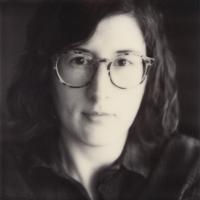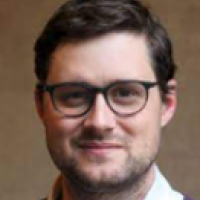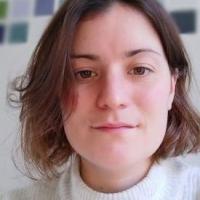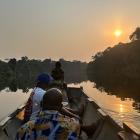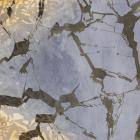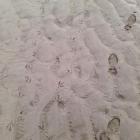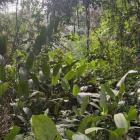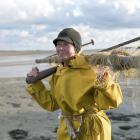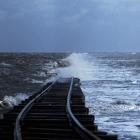Imaginaries
One evening, in the village of Bemba II, on the road heading towards the Dja Reserve, Gaston Mempong tells the story of how certain animals came to tell the time. One day, the turaco (a bird) and the chimpanzee organized a competition to see who can make the loudest noise—the bird call or the chimpanzee with a drum. Hearing this, God sent a turtle to find out who was making all this noise. The turaco and the chimpanzee blamed the other, since each had claimed to make more noise than the other. When the turtle reported this back, God summoned the chimpanzee and the turaco to both appear and make the sounds for him in his presence. Both arrived but did not comply. So, as punishment God instructed the chimpanzee to bang the drum each night at midnight and then every hour for a time, and the turaco to call at certain times early in the morning, to remind Him and the rest of the forest of the time.
“Evening stories,” Baka storytelling: audio clip of the story above in the Baka language. Recorded by Blake Ewing, 7 January 2025.
Gaston’s story speaks to the temporal imaginaries of the Dja, in which the structure of the diurnal (and seasonal) cycle is closely linked with cultural knowledge, expressed through myth and symbolic narrative as part of a shared reality. Rather than separating the mythical from the factual, this cosmology integrates both as coconstitutive ways of knowing and sensing time in the forested world.
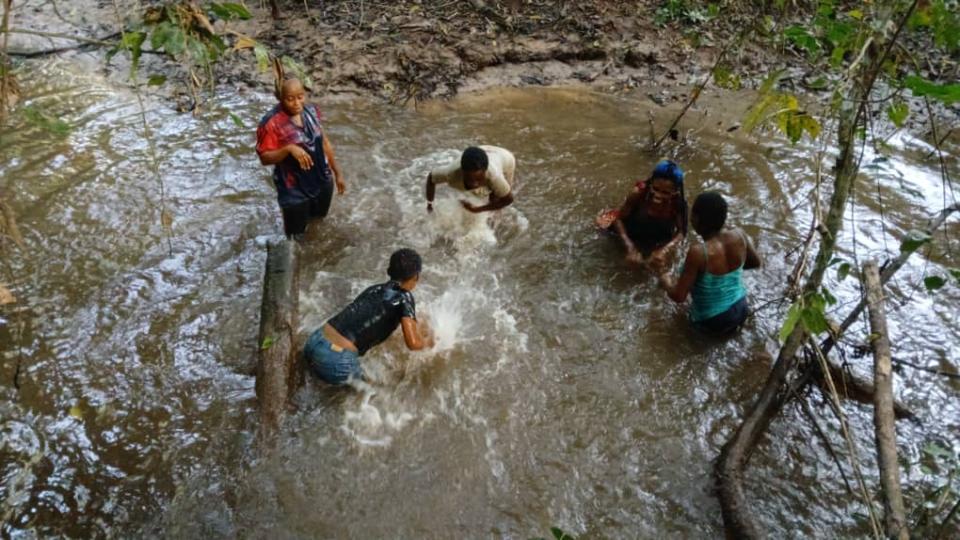
Figure 4: Baka women drumming in a forest stream, near the village of Doum, Dja-Et-Lobo, South Region, Cameroon. Photograph by Achu Joachem, January 2025.
Figure 4: Baka women drumming in a forest stream, near the village of Doum, Dja-Et-Lobo, South Region, Cameroon. Photograph by Achu Joachem, January 2025.
© 2025 Blake Ewing. Used by permission.
The copyright holder reserves, or holds for their own use, all the rights provided by copyright law, such as distribution, performance, and creation of derivative works.
Wetlands shape and are shaped by the imagination—and many are places that unsettle as much as they captivate. Debbie Yare, an artist based in Morecambe Bay, thinks of wetland landscapes as “living archives,” dynamic repositories of memory shaped by both human and nonhuman forces. These are fluid and ever changing, retaining and erasing traces with each tide. Wetlands are capable of making things visible and invisible, conjuring a palpable cyclical impermanence.
Figure 5: “Sediment,” video by Debbie Yare, 2023–2024.
Similarly, writer Colin Williams describes the Wadden Sea as a place where the symbolic dimension of the passage of time becomes startlingly tangible. “Time is very visible in the Wadden Sea,” he notes, explaining how each tide brings new deposits of sand and detritus, creating an ever-renewing surface that nonetheless carries the ghost of previous tides. Colin’s phrase, “haunted by the last tide,” captures this transience. Footprints of people, birds, and beetles are imprinted in the dunes, but these ephemeral marks are quickly erased. The sea does not retain its stories in a fixed form; rather, it carries them forward in fragments—traces of amber washed ashore after a storm, sea-polished stones, or the occasional shard of ancient pottery. This sense of time is shaped by the specific rhythms of tidal marshlands, where daily cycles visibly reshape the land. It contrasts with other wetland types, such as those formed behind coastal dunes, where slower geomorphological processes act across longer timescales. In the Wadden Sea, time unfolds at the pace of the tide.
Debbie’s concept of the living archive also acknowledges the agency of nonhuman forces—cockles, birds, and the tides themselves—not simply as objects within an archive, but as archivists of place. In the Wadden Sea, a migratory crossroads teeming with movement and memory, this role becomes especially vivid. These beings record, transmit, and reshape the landscape’s temporal and ecological stories: The return of birds like the bittern, cuckoo, and nightjar, now rare or extinct elsewhere, forms a symbolic, sonic archive that echoes across the marshes. The landscape itself, marked by restored marshes and shifting dunes, bears the imprints of both human intervention and natural change, but it is through the daily rhythms and migrations of these other-than-human archivists that the continuity and renewal of place is sustained.
Debbie and Colin’s vivid, fragmentary and ghostly archives—and perhaps Gaston’s parable of forest times, too—seem to offer ways of imagining the abstraction others have called “deep time” in the context of wetland spaces.
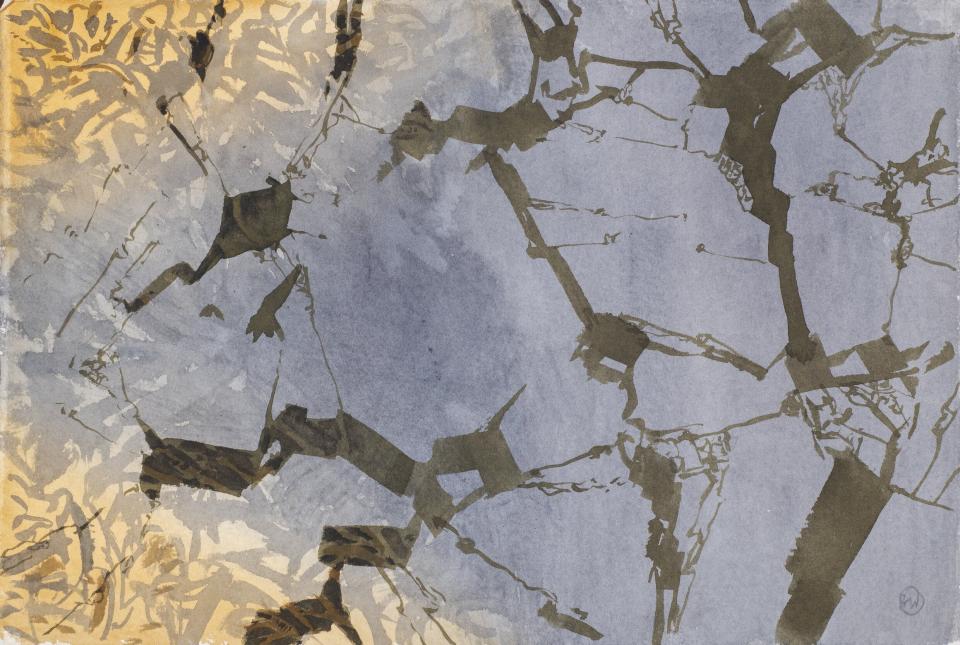
Figure 6: “Mudflat, Bacterial Biofilm,” watercolor by Ben Woodhams, Haunted by the Last Tide: The SWLA and the Danish Wadden Sea, edited by Marco Brodde, 2023.
Figure 6: “Mudflat, Bacterial Biofilm,” watercolor by Ben Woodhams, Haunted by the Last Tide: The SWLA and the Danish Wadden Sea, edited by Marco Brodde, 2023.
© 2023 Ben Woodhams. Used by permission.
The copyright holder reserves, or holds for their own use, all the rights provided by copyright law, such as distribution, performance, and creation of derivative works.
Wetland imaginaries affect us on a bodily level. To move through wetlands is to surrender to shifting rhythms—mud pulling at each step, tides dictating movement, horizons dissolving into sky. These environments evoke a sense of alienness—of being both immersed in and estranged from the land, as if stepping into a space where human presence is neither central nor assured. Walking on the clay in Hest Bank, Morecambe Bay, time slows as the ground pulls at each step, movement becoming a negotiation with the terrain. Laura Harrington, an artist, recounts walking barefoot across the Bay from Arnside to Grange-over-Sands, struck by the strange, alien texture of the sediment—a sensation absent from her “somatic archive.” The ground was neither entirely solid nor liquid, an environment that is neither fixed nor entirely knowable. The gray sediment, the endless sky, the disorienting lack of landmarks, all contributed to a feeling of being suspended between past and future, in a moment that could vanish at any second. While this description captures the sensory and temporal experience of tidal flats, wetlands take many forms—bogs, marshes, floodplains—each with their own distinct rhythms and materialities, affording different kinds of embodied engagement with land and time.
One of the oldest, deepest imaginaries of all is our idea of nature as a realm outside of human time. In Cameroon, like elsewhere, there are conflicting imaginaries of nature. For the Baka, however, as a man from the village of Doum explained, the forest is where they came from. Even on the roadside, the Baka are a people of the forest. It is therefore difficult for them to imagine a concept of nature, or a nature reserve like the Dja, where the Baka are not allowed to go.
On the Wadden Sea coastline shifting tides, conservation efforts, and historical land reclamation complicate the relationship between nature and culture. Colin describes his journey across the border between Germany and Denmark, where drained farmland transitions to the untamed vibrancy of the Tøndermarsken marshlands, a critical sanctuary for migratory birds. At the border, life seemed to intensify—thousands of barnacle geese, waders, plovers, and curlews surging together in a restless, shifting mass, their cries echoing against the gray sky. This spectacle, reflected in the ditches, drains, and open waters, symbolized the delicate balance between conservation and natural forces, shaped by both human intervention and the sea’s enduring rhythms. Here, conservation has worked both with and against the sea—protecting reclaimed farmland with dykes and sluices while also opening waterways to restore ecological flows, as seen in the return of migratory fish. Yet, conservation itself complicates traditional understandings of nature and culture: Landscapes that appear wild are, in reality, carefully managed, and conservation acts rely on human intervention.
The Netherlands exemplifies an extreme attempt to control the times of nature through conservation. For centuries, dykes and drainage projects have imposed a rigid human temporality onto wetland environments, transforming tidal marshes into engineered landscapes. The saying “God created the Earth, but the Dutch created the Netherlands” reflects this deeply ingrained and symbolic belief in mastery over nature. Reclaimed land, tidy, productive, and shaped by centuries of human effort, is often perceived as “natural” because it aligns with dominant cultural values of order and utility. In contrast, untamed salt marshes, with their shifting boundaries, seasonal floods, and unruly ecologies, are seen as unstable or incomplete, land not yet brought under control. This perception reveals an underlying colonial mindset in which value and naturalness are tied to human intervention and control.
Marco Brodde, an artist who lives in Fanø in the Danish Wadden Sea, observes that the relationship between island life and the surrounding water is particularly complex. Historically, land was drained for forest plantations, and current conservation efforts seek to reverse this process, making “nature” wetter again. This raises important questions about what kind of “nature” is being preserved, not as a fixed past ideal, but as a future-oriented goal informed by historical conditions. Is the aim to maintain the managed forests shaped by past human intervention, or to foster the shifting mudflats untouched by artificial drainage? While dynamic change is a feature of all landscapes, wetland conservation uniquely involves managing these continuous transformations to balance ecological resilience with cultural histories.
Keywords: archive, deep time, body, nature, conservation
Link words: structures, cycle, memory, impermanence, rhythms, flows, reclamation, history



